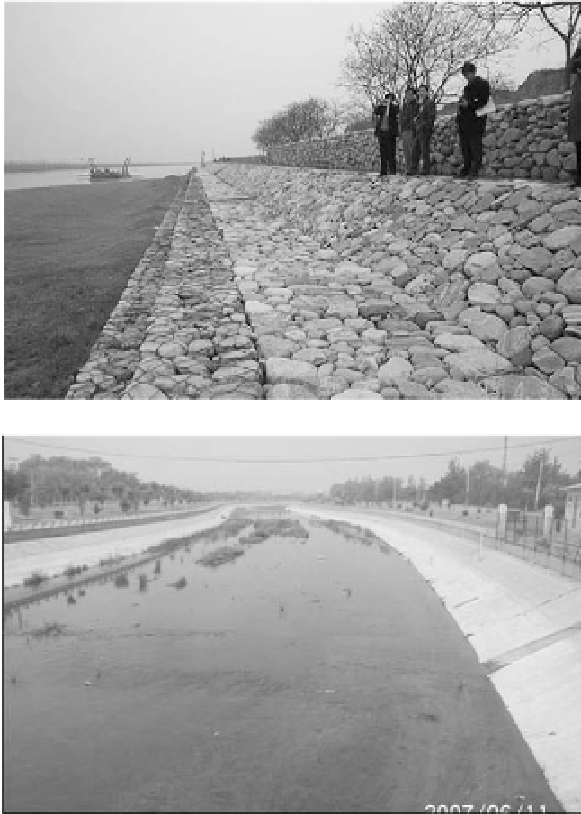Environmental Engineering Reference
In-Depth Information
Chanalization and water diversions
—Like dams, channelization disturbs the stream ecology, by
disrupting riffle and pool complexes needed at different times in the life cycle of certain aquatic
organisms. The flood conveyance benefits of channelization and diversions are often offset by ecological
losses resulting from increased stream velocities and reduced habitat diversity. Levees along rivers and
diversion channels tend to replace riparian vegetation. The reduction in trees and other riparian
vegetation along levees result in changes in shading, temperature, and nutrients. Hardened banks result in
decreased habitat for organisms that live in stream sediments, banks, and riparian plants. Figure 10.23 (a)
shows that the sediment banks of the lower Weihe River (the largest tributary of the Yellow River) have
been replaced by stone walls in order to control floods and stabilize the channel. Figure 10.23 (b) shows
that an urban stream in Beijing is reconstructed with concrete banks and channel bed for controlling
seepage. Most of macro-invertebrates, reptiles, and amphibians have disappeared because the habitats for
them have been covered with concrete.
(a)
(b)
Fig. 10.23
(a) Hardened banks of the Weihe River; (b) Concrete banks and bed of an urban stream in Beijing
Water diversion from rivers impacts the stream ecology, depending on the timing and amount of water
diverted, as well as the location, design, and operation of the diversion structure. Figure 10.24 shows that


Search WWH ::

Custom Search